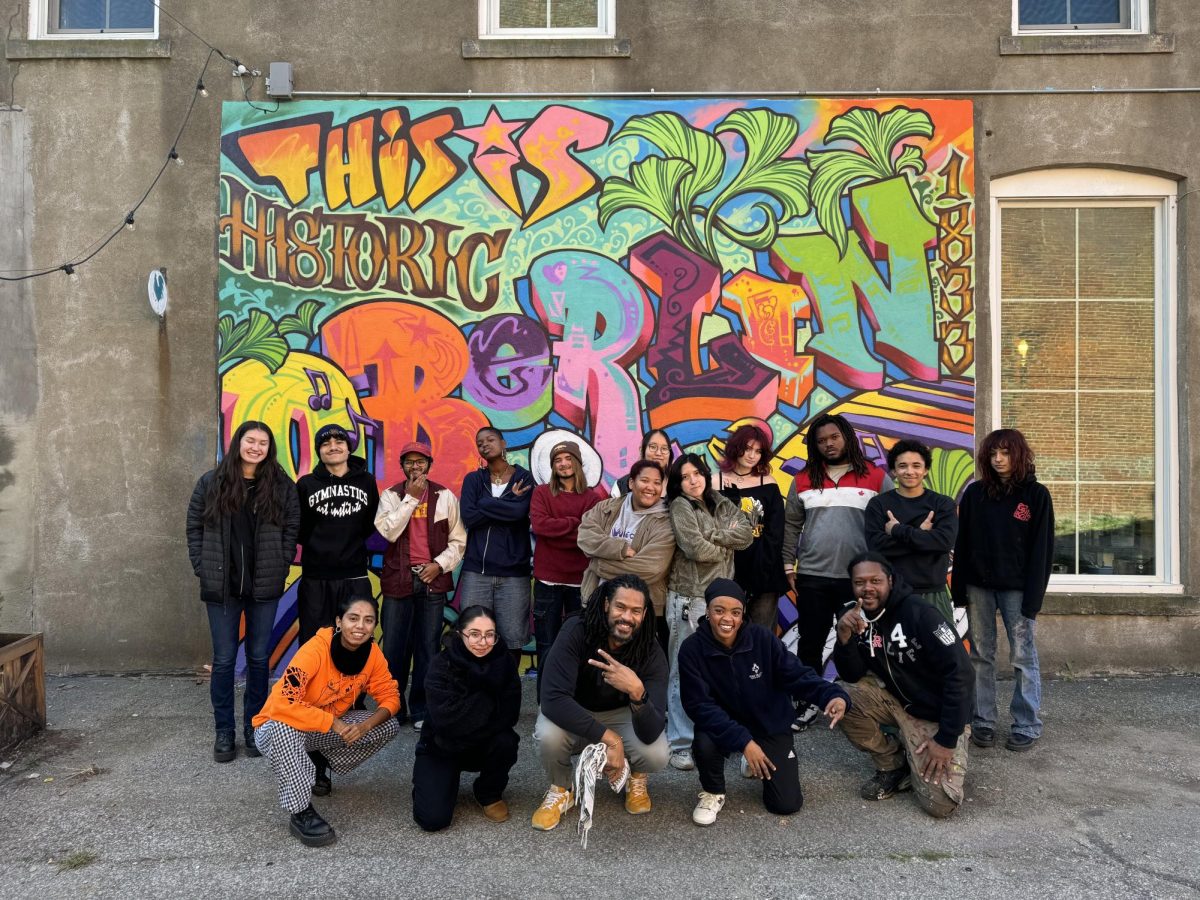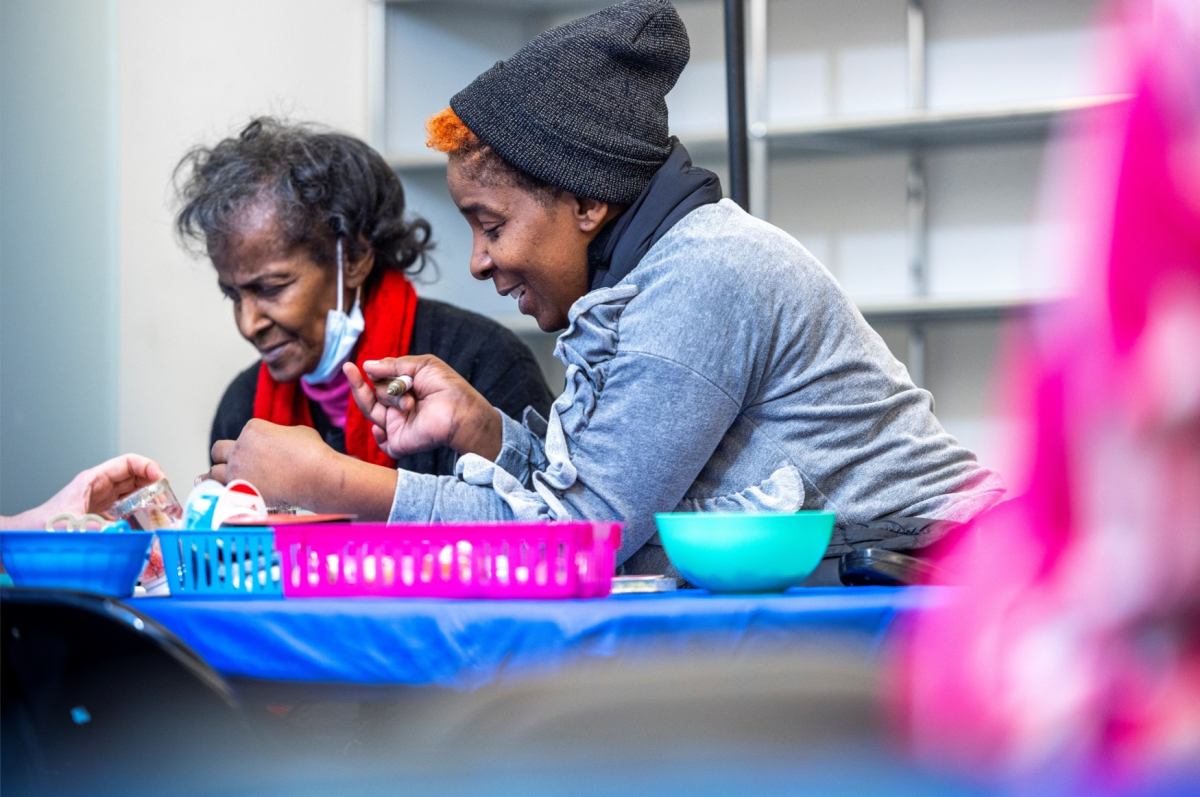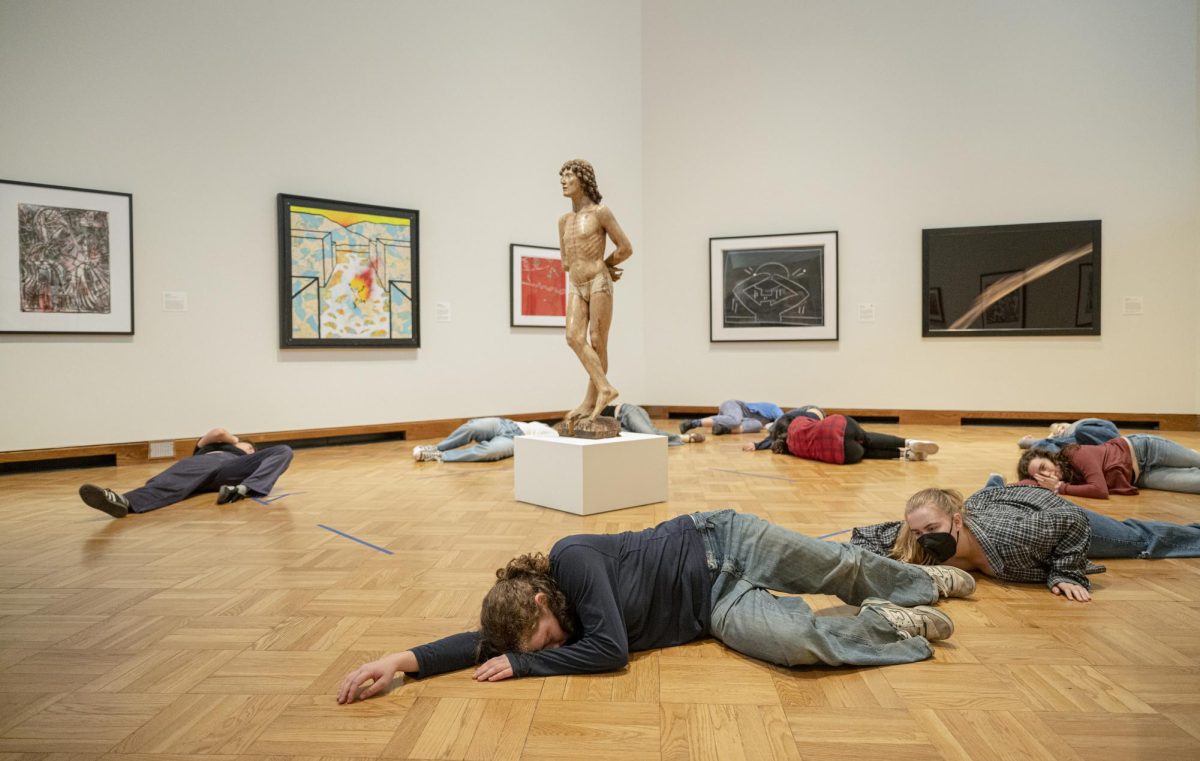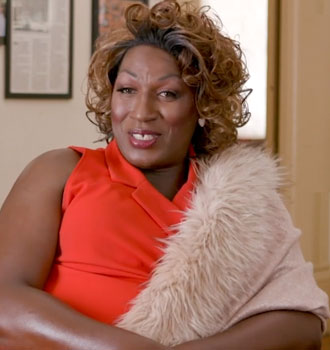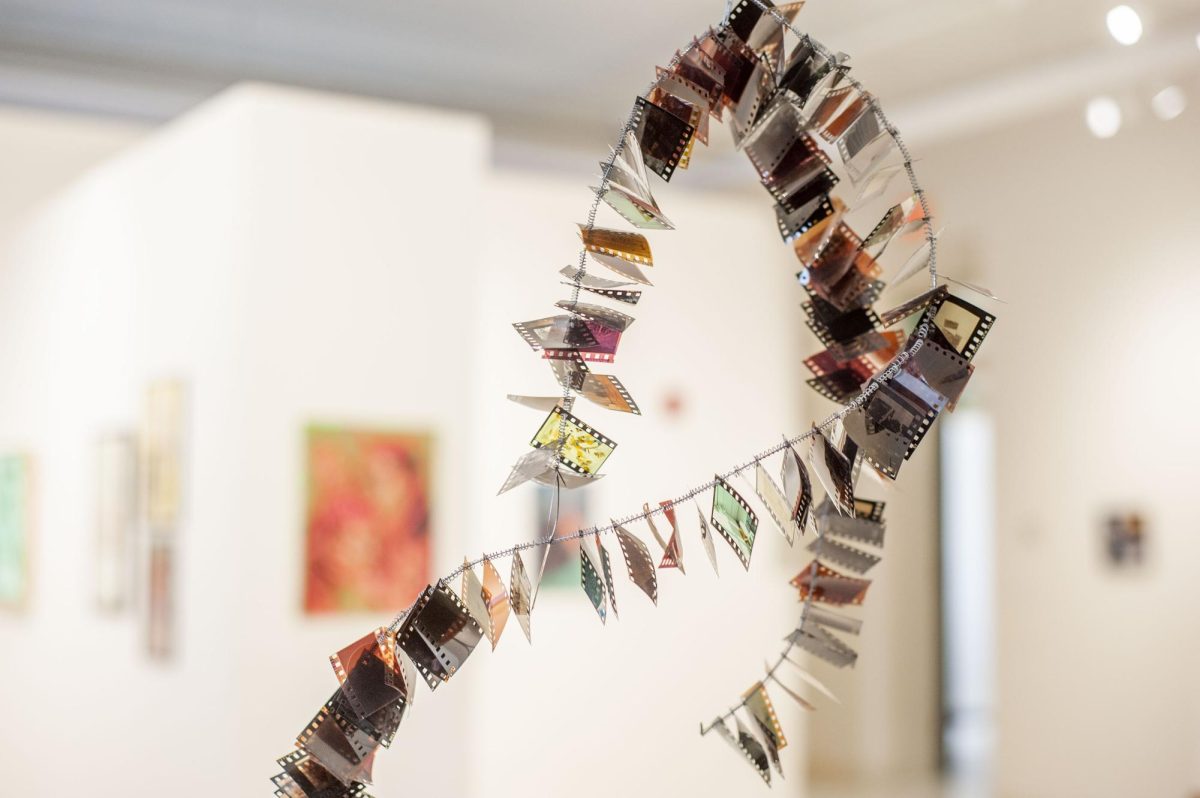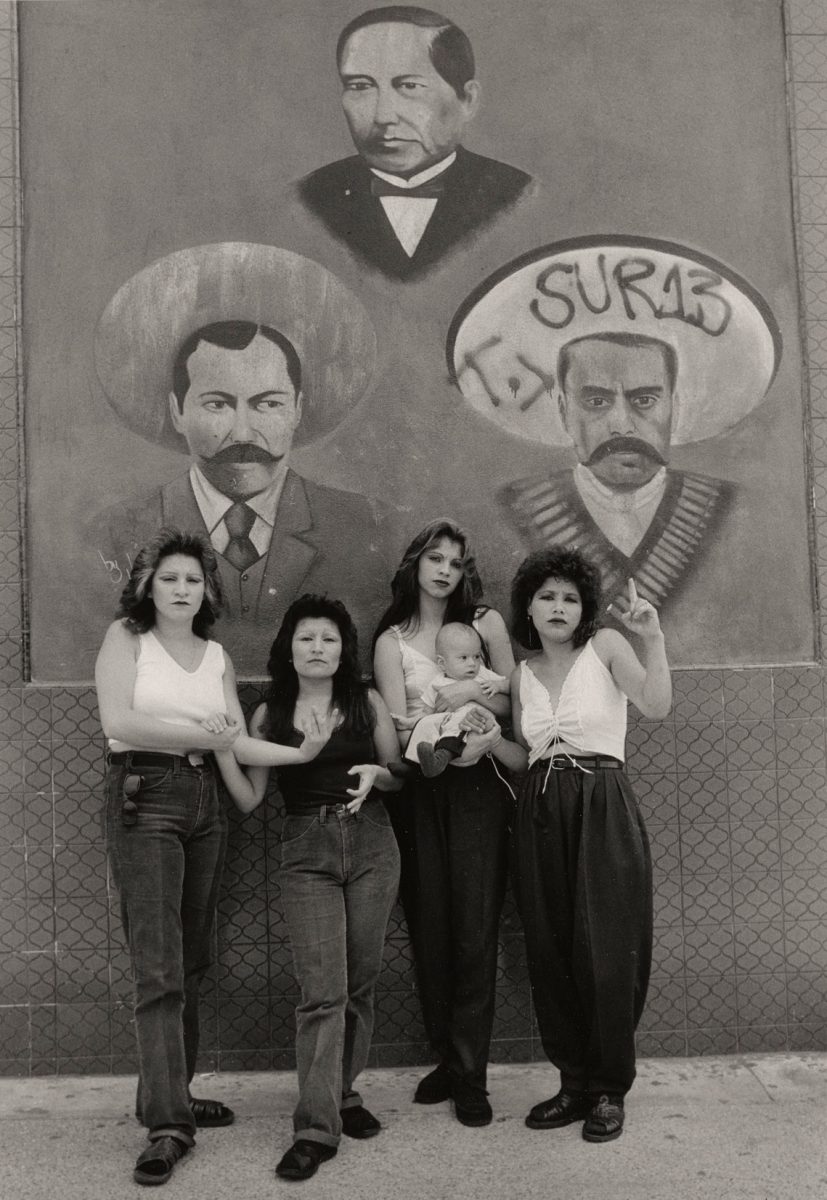When you walk through the alleyway between The Feve and Blue Rooster Bakehouse, it is impossible to miss the new, brightly colored graffiti mural painted on the bakery’s side. This past week, Assistant Professor of Studio Art and Africana Studies Michael Roman’s Studio Art class — Intro Aesthetics of Hip Hop: Graffiti from Boxcar to Basel — finished creating this mural. Made in collaboration with Firelands Association for the Visual Arts and world-renowned graffiti and tattoo artist Dayz Whun, the mural represents a new, visual connection between the community and College students.
Initially, students struggled to determine how this mural could best serve the community rather than the College.
“At first, [we thought] it’s Oberlin, right? So we were trying to do Yeobie and include mascots,” College third-year Erika Flores said. “That wasn’t what the City wanted. [Instead, we included] gingko trees and incorporated white squirrels.”
Roman discussed how the students approached the task.
“The big thing was remembering that the City of Oberlin was our client and not the College. [We tried] to think about what the City would appreciate having on a wall on the side of their business.”
Hanna Schroth, who works at Blue Rooster, noted her appreciation for the new mural.
“I really enjoy that it’s a lot of new modern art with the old historic, very Oberlin feeling still,” Schroth said. “The little white squirrel on there is absolutely adorable.”
The mural was made in the context of the other two major murals in town — the Oberlin Community Mural on the wall of the bookstore and the postcard mural on the side of Mill on Main.
“We did a tour of the other murals in town to see what we liked and didn’t about those — things to strive for and pitfalls to avoid,” Roman said.
What stands out most about the mural is the bright, almost neon, colors used to create it. Featuring bright blues, teals, yellows, and oranges, with no spot left blank, the mural is sure to catch the attention of anyone walking by.
“We wanted to highlight … Oberlin’s musical history and the life and color of the town,” Roman said. “We wanted to speak to that with the design and the use of color.”
The goal was not just to represent the vibrancy of the town but also to grab attention.
“You got this industrial gray side of the building, and you got the faded brick behind us,” Roman said. “This little corner needed a pop of color. … It’s also really eye-catching — not just from the street walking, but driving, you’re gonna do the double take.”
Schroth also commented on the use of colors in the new mural.
“It’s really nice to have a pop of color and not just a gray wall on the side of the building,” Schroth said. “It’s been really fun to watch people peek by and walk over to go see the mural. It brings a lot of life to the little sad alleyway we had before.”
Roman spoke of what the mural means for Oberlin as a college town.
“In some ways, any small college town has a little bit of town–gown or townie versus student kind of conflict,” Roman said. “I think the idea of doing something like this — having students involved and having the idea of ‘this is for the City’ at the forefront — really helps to bridge that gap a little bit.”
Roman plans to continue his graffiti mural-making and has been asked to make more for the College in the future. Murals align with his goal to illuminate areas where people do not necessarily walk by frequently. Roman pointed to the Office of Financial Aid, Afrikan Heritage House, and Harkness House in particular as possibilities. With enough support from the College, he and his future students can continue their work of beautifying Oberlin.
Whether it be for the City or the College, Roman’s murals aim to bring people together through shared artwork.
“With community art projects like this, you always have to keep in mind who you are deeming as the community,” Roman said. “Who is this for? Who gets a voice in what’s being made? Who has to be happy with it at the end? If everyone feels ownership over it, then it’s more likely to survive.”


